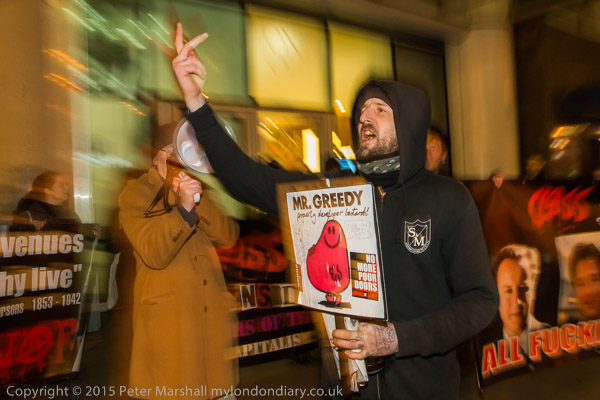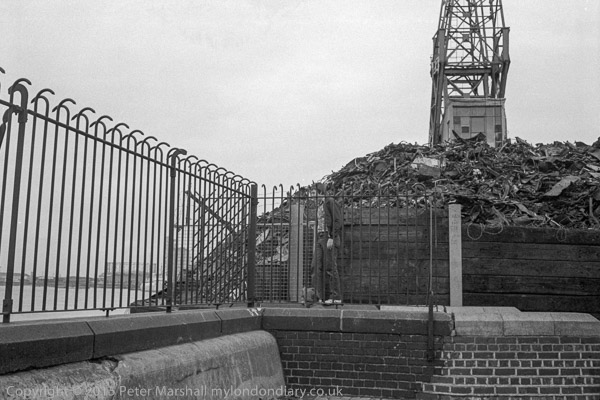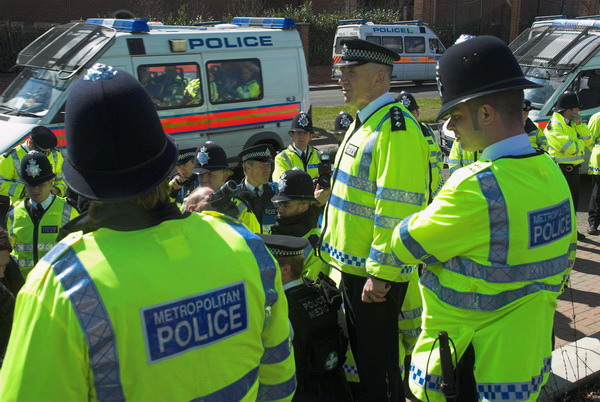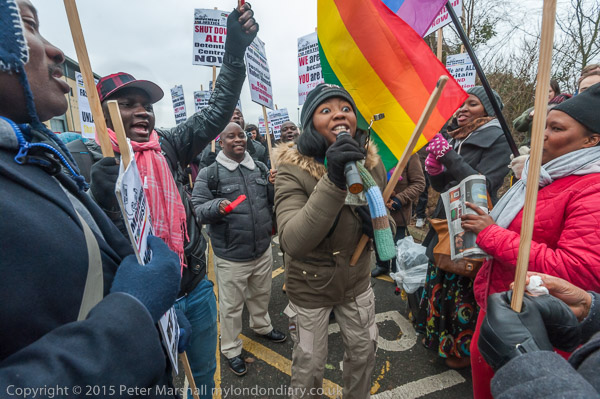
Let Greece Breathe! was a fairly busy event, with quite a few photographers and videographers and fairly crowded, making it difficult to get exactly in the places I would like to have been.
Video and still photography have very different requirements, and sometimes this can be a problem. Video generally works best for most things when the camera is static for fairly long periods, at least much of the time, preferably on a tripod. In contrast, being in the same place for long as a still photographer is generally a bad thing, leading to too much repetition in your images. Even for simple things like photographing a speaker, its usually good to be able to vary the background. Composition is I think generally far more important in still images than in video.

At this event it was difficult for still photographers to move around without getting in the sight lines of a couple of video crews from foreign TV; it would have been easier had they set up closer to the tape separating the audience from the speaker. Though I tried hard not to get in the way I think that Greek TV viewers will have got the occasional view of my slightly bald patch on their screens.

To keep out of the way of the TV cameras I spent rather too much time close to one of the two speakers on stands at the front of the audience, and it was loud enough to probably damage my hearing and certainly to give me a headache – after a while I simply had to move away.
One of the things I try to do is to find an idea and then to pursue it until I’m happy that I have captured it (or sometimes simply have to give up.) One of the things that I noticed at this event was a Syriza poster of Alexis Tsipras with his head at roughly life size, and I tired to use this in pictures with the heads of real people, three of which you can see above.

Another little series of images was of the various speakers with the Syriza symbol on a flag behind them. This was made a little tricker as the flag was being waved around, and flags are in any case often something of a challenge as they get blown around – or simply droop when you need them to fly. Add to that the need to catch the speakers in interesting or dramatic expression or gesture – and with their eyes open and you have a challenge.

There are a few more of these and some variations in Let Greece Breathe!
A different challenge was posed by a line of people on the steps leading down into the square from the North Terrace where the rally was held. If you approached too close it was difficult to get the whole message, while if you moved back, someone was almost certain to get between you and the message.

Often in situations like this the 16mm fisheye with its 146 degree horizontal angle of view solves the problem of getting close but getting everything in the view. But in this case I didn’t find it entirely satisfactory. Although the verticals are straight (thanks to the FIshEye Hemi plugin) I find the curvature of both the step at the bottom and the roofline a little distirbing. It is possible to remove these but only at the expense of some rather curious heights of the people across the central row who would get considerably taller towards the edges.

I tried with the 16-35mm, both from a fairly central position and also form one side of the othere, but was even less happy with the results and none of my attempts appear on line (though a long line of photographers was busily taken them from there.) But later I did go some way futher down into the square, far enough back to take a picture at the wide end of the full-frame 70-300mm. There are a lot of people in front of the message, but they appear less imporant from a distance. Possibly going even further away, particularly if I could have got a little height from climbing on to the plinth of Nelson’s column, would have given a better view, but the people put down their letters and dispersed before I had time to try it.






































